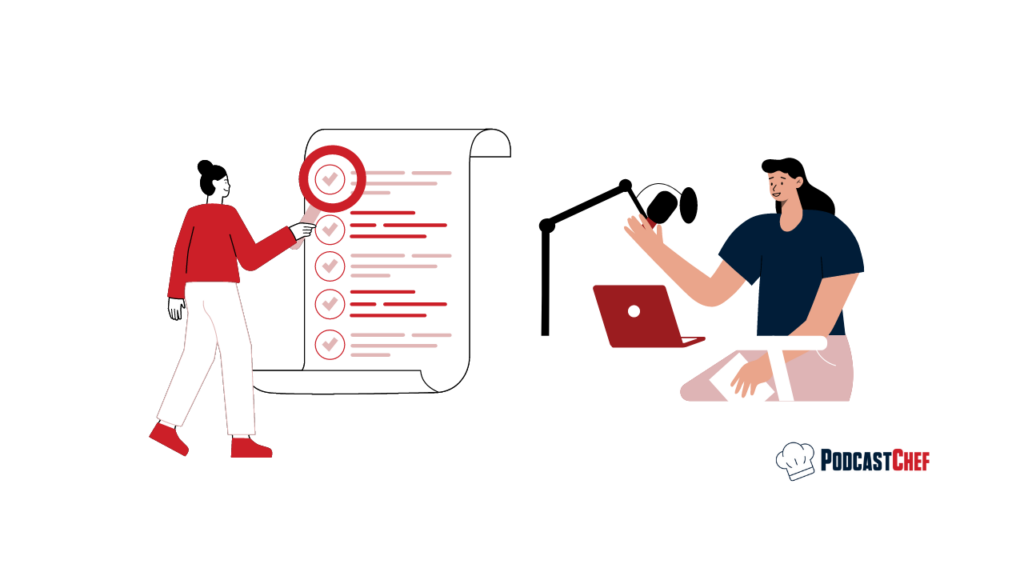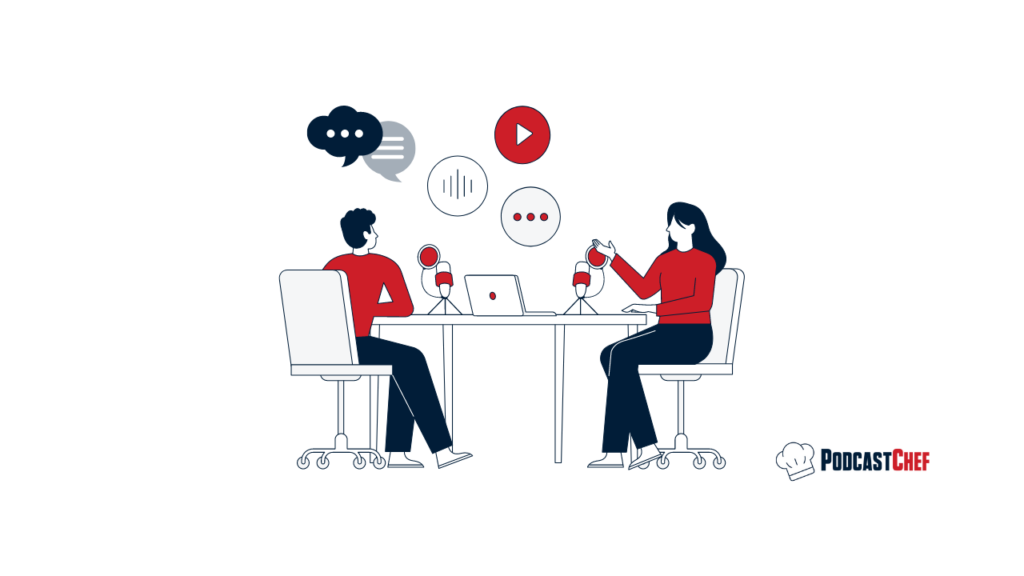As the podcast industry continues to grow, the demand for high-quality content and polished production is at an all-time high. Listeners expect clarity, professionalism, and an engaging experience, while clients expect a flawless final product that reflects the time and resources they’ve invested.
In this article, we will walk through the quality control process for podcast production, covering everything from audio and video checks to reviewing show notes and cover art. This step-by-step guide will help ensure that every episode you produce is error-free, well-organized, and ready for distribution.
Why Quality Control Matters in Podcast Production
Quality control in podcast production ensures that each podcast episode is reviewed and polished before it goes live. It’s a safeguard against potential issues such as misaligned audio, background noise, misspelled names, broken links, or other errors that could detract from the professional polish of the episode.
Quality Check is not just about fixing errors; it’s about enhancing the overall experience for listeners and clients by ensuring that every component—from audio to visuals—is seamless. This process establishes credibility, fosters trust with clients and ensures that audiences return for future episodes.

The Podcast Quality Control Process: A Step-by-Step Guide
Reviewing the Video File
- Access the Post-Production Folder:
- Begin by navigating to the post-production folder specific to the guest or episode. Ensure all files, including video, audio, and any associated assets, are easily accessible.
- Watch the Full Episode Video:
- Play the video file from start to finish, closely monitoring the visuals and audio. Pay attention to overall video quality, transitions, host and guest’s name, and syncing between visuals and sound.
- Check the Intro and Outro:
- Confirm that the correct intro and outro sequences have been added. These are essential branding elements, and any error in their placement or quality could harm the professional presentation of the podcast.
- Look for Technical Glitches or Background Noise:
- Watch for visual glitches, mismatches in the audio-visual sync, or any unnecessary background noise. Check for interruptions such as static, clicking sounds, or poor video transitions.
- If any errors are identified,.
- Consistency Check:
- Ensure that the branding, guest names, and host names are spelled and displayed correctly throughout the video.
Reviewing the Audio File
- Listen to the Audio File:
- After reviewing the video, switch to the audio file. Listen to the entire episode with close attention to quality. Ensure that it matches the video and is consistent in tone, clarity, and volume.
- Monitor for Audio Issues:
- Common audio issues include background noise, distortions, uneven volume levels, and awkward silences.
- Verify Synchronization with Video:
- Ensure that the audio matches the video perfectly. Any discrepancies, such as delayed voiceovers or out-of-sync dialogue, need immediate attention.
- Final Confirmation:
- For final changes, once an update has been made, listen to the revised audio file to confirm that all issues have been resolved.
Checking the Cover Art and Promotional Materials
- Review the Episode Cover Art:
- Check the episode cover art for accuracy. This includes verifying that:
- The guest’s and host’s names are spelled correctly.
- The show’s title is displayed properly.
- The artwork aligns with the podcast’s branding and style.
- Check the episode cover art for accuracy. This includes verifying that:
- Check Promotional Shorts or Snippets:
- If short promotional videos or social media clips have been created, review them for consistency in messaging, visuals, and sound. These assets need to be error-free, as they are often the first interaction a potential listener will have with the episode.
- Verify Visual Quality:
- Ensure that the images used in the episode art are clear, and not distorted or pixelated. Blurry or poorly cropped visuals can damage the professional reputation of the podcast.
Reviewing the Show Notes
Show notes are often the most overlooked aspect of a podcast, but they play a crucial role in listener engagement and SEO. Here’s how to ensure they are error-free:
- Proofreading for Grammar and Spelling:
- Thoroughly read through the show notes to correct any grammatical errors or misspelled words. Make sure sentence structures flow smoothly.
- Check the Episode Summary:
- Review the summary to ensure it accurately reflects the episode’s content. The summary should be engaging, informative, and concise, giving listeners a good idea of what to expect.
- Verify the Links:
- Test every link included in the show notes to ensure they direct users to the correct resources. Broken or incorrect links can frustrate listeners and reduce engagement.
- If a link is incorrect, verify the correct link with the client, and make updates as necessary.
- Cross-Check Guest Information:
- Confirm that the guest’s name, title, and bio are accurate. This may require cross-referencing with the client or guest to ensure everything is up to date.
Client Approval Process
Once all quality control checks have been completed, it’s time to submit the episode and associated assets to the client for their final approval. Here’s how to do that efficiently:
- Organize Episode Assets:
- Ensure all files (audio, video, cover art, and show notes) are clearly labeled and organized within the client’s folder. This will streamline the review process for the client and prevent confusion.
- Send Files for Client Review:
- Share the completed episode folder with the client via the agreed-upon method (cloud storage, email, or another file-sharing system). Provide them with all necessary materials and instructions for review.
- Wait for Client Feedback:
- Be prepared for the client to request changes. If they do, circle back with the editing team to address any issues.
- Implement Final Edits:
- Once changes are made, ensure that the episode and assets are error-free before submitting them back to the client for final approval.
- Receive Final Approval:
- After the client signs off on the episode, it is ready for distribution.

Conclusion: Why Rigorous Quality Control Sets You Apart
A thorough quality control process not only ensures that errors are caught before the episode goes live, but it also helps build a reputation for professionalism and reliability. For anyone who has a podcast, the investment in quality control is an investment in the long-term success of the podcast, both for the client and the audience.
By following this guide, your podcast can deliver top-tier episodes that engage listeners, and build a brand of trust. Quality control isn’t just about fixing mistakes—it’s about elevating the entire production process and creating content that stands out in a crowded podcast landscape.
Don’t forget to download our free checklist to help you stay on track with all the key points discussed in this article!